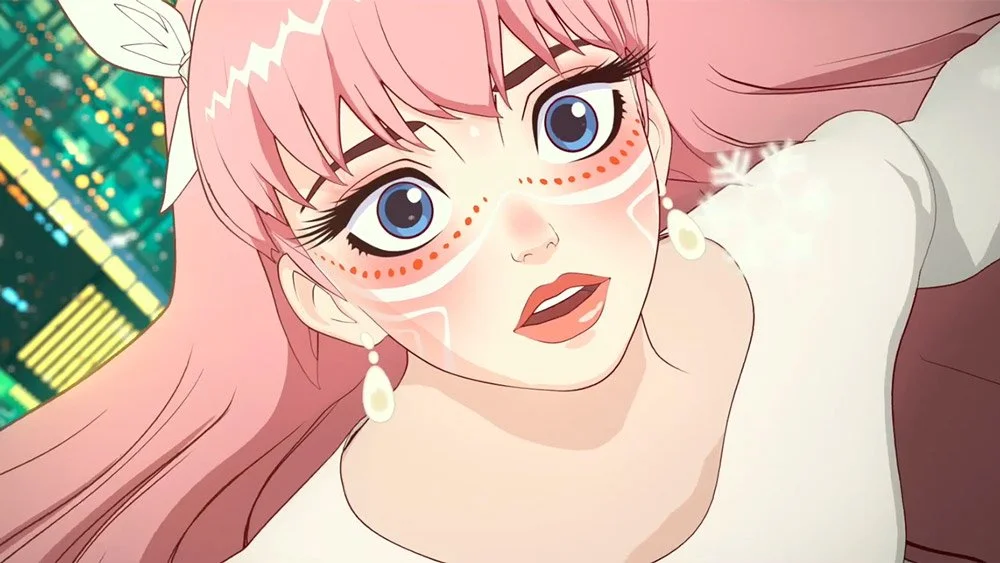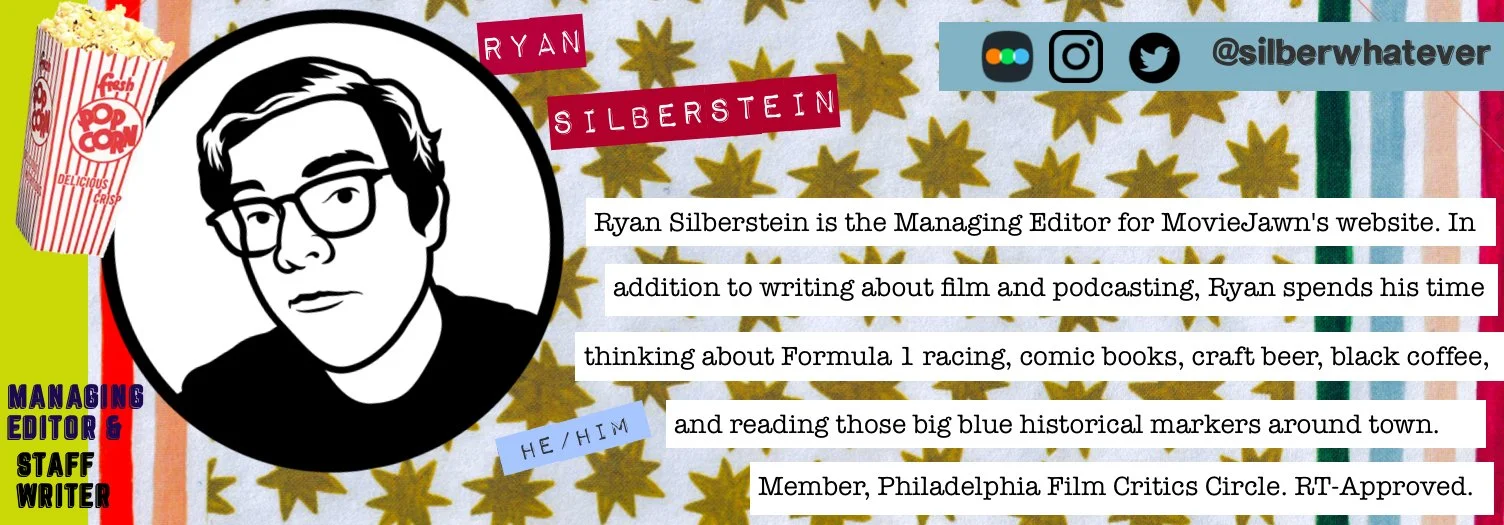BELLE draws on Western stories to tell a postmodern fable about healing
Written and directed by Mamoru Hosoda
Starring Kaho Nakamura, Ryō Narita, Shōta Sometani
Unrated
Runtime: 2 hours, 3 minutes
In theaters January 14
by Ryan Silberstein, Managing Editor, Red Herring
Due to my on-and-off exploration of anime over the years, this is only the second Mamoru Hosoda work I’ve seen, though The Girl Who Leapt Through Time and Mirai have been on my watchlist forever. Previously, I saw his film The Boy and the Beast when it played at the Philadelphia Film Festival a few years ago, and found it charming and beautiful to look at. While some may complain about the familiarity of some stories, especially animated films that lean on fairy tales, I find them endlessly interesting, especially when they are not just a straight retread of what came before.
Belle tells the story of 17 year old Suzu (Kaho Nakamura) living in rural Japan. She has lost her ability to sing due to her lack of self worth created by the tragic death of her mother. One of her friends suggests logging into the virtual online space called U. Suzu creates “Belle,” a singing avatar who goes viral and whose name is eventually changed to Belle due to her beauty. During a virtual concert, The Dragon (Takeru Satoh) interrupts, drawing the ire of some virtual vigilantes. However, Suzu is intrigued by The Dragon, and tries to learn more about him.
What follows is a loose retelling of Beauty and the Beast, with the 1991 Disney version being a visual reference point, especially for the Dragon’s castle in U. While the surface-level story of the character of Belle helping Suzu find her voice in real life is there, what resonated with me was the power of forgiveness and the role that love plays in healing. Of course there are a ton of ways that the Mouse Kingdom has undercut fairy tales–which originated mostly as cautionary tales and didn’t always have happy endings–but much of our understanding of them has been literalized to the point where ‘Beauty and the Beast is Stockholm Syndrome’ is a common take on the story, nevermind that Stockholm Syndrome itself has a dubious-at-best tie to actual psychological evidence.
So what is the meaning of Beauty and the Beast? In both Belle and the familiar Disney animated version, the Beast/Dragon is not abusive to Belle, and her interactions with him are largely through her own agency. The meaning that most children would likely tell you is that underneath the beastly exterior is a boy who has endured pain and wields it like a shield to keep out the world. Like Gaston, the character of Dustin in this anime appears to have all the right things on the surface, while his looks and reputation hide his monstrous behavior. See also: the works of Guillermo del Toro. But when the Belle figure comes to love him, at least in the empathetic sense, the Beast’s path to healing opens up.
Mamoru Hosoda clearly understands how important this is to the story while never losing sight of Suzu as its main character. Sometimes we need someone else to help lift us out of our circumstances. While everyone should aim for self-reliance from an emotional perspective, that’s not always realistic, especially when someone is in an abusive relationship as depicted in Belle. If all you’ve known is a maze set up by someone else, it can be impossible to find your way out. While the world shuns The Dragon as a disruptive beast, Suzu tries to understand him, and finds a path to healing. All of this becomes interwoven with the power of the art we love as another path to healing. Through her songs, Suzu/Belle also finds healing for herself as well as inspiring many that hear her music. In addition to its fairy tale inspiration, Belle is also a love letter to anyone who has been deeply affected by art. The stories that speak to us and nourish us creatively and emotionally provide a way to explore our feelings and desires that are unattainable, unrealistic, or even problematic.
Bolstering my enjoyment of Belle are the several visual styles deployed throughout the film. Over the course of the runtime, we are treated to “so real the food makes you hungry” contemporary anime style as seen from Studio Ghibli and the films of Makoto Shinkai, which always makes me appreciate the intricate drawings that give texture and feeling to everything in the frame. Belle’s design comes from character animators Jin Kim and Michael Camacho. Kim is especially notable as the first Korean animator to work for Disney, and animated lead characters in The Emperor’s New Groove, Treasure Planet, and The Princess and the Frog. The design of U, in turn, was handled by my beloved Cartoon Saloon, and the Dragon’s castle especially creates a visual tie to European fantasy roots. All of these create both similarities and contrast, making Belle more than the sum of its parts.


